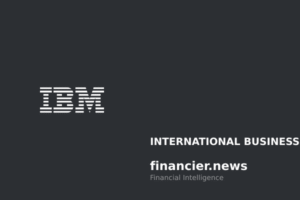$JNJ $PG $BMY
#StockMarket #RiskOff #Investing #StocksToWatch #MarketCollapse #EconomicUncertainty #StockAnalysis #BearMarket #InvestingStrategy #FinanceNews #MarketTrends #EquityMarkets
Recent market dynamics have left investors grappling with an increasingly complex landscape as concerns over slowing global growth, persistently high interest rates, and geopolitical tensions mount. Against this backdrop, traditionally considered “risk-off” stocks—equities perceived as safer havens during periods of economic uncertainty—are now showing signs of potential vulnerability. Notably, several blue-chip companies in the healthcare, consumer staples, and pharmaceutical sectors are under scrutiny as macroeconomic pressures and sector-specific challenges weigh on their valuations. Investors focusing on these typically defensive plays may need to reevaluate their positions or reconsider their diversification strategies, given the brewing risks.
For instance, $JNJ, a hallmark of stability in the healthcare sector, faces headwinds not just from potential litigation risks but also from broader shifts in consumer sentiment. Johnson & Johnson has been a go-to for investors seeking stability during turbulent market conditions, primarily thanks to its diversified revenue streams. However, mounting concerns over legal liabilities related to its talc products, as well as thin margins in some of its key product segments, are creating fissures in its foundation. As the regulatory landscape grows more stringent globally, J&J could face a combination of financial and reputational setbacks, a development that may impact not just its stock but broader market confidence in healthcare behemoths.
Similarly, $PG, a staple in consumer goods, is beginning to show cracks amid heightened input costs and shifting consumer spending patterns. As inflation continues to pinch wallets, consumers are increasingly favoring private-label products over higher-priced branded items. Procter & Gamble, long celebrated for its pricing power, faces the unenviable task of maintaining margins in an inflationary environment without alienating price-sensitive consumers. Meanwhile, competition from private labels and emerging entrants into the consumer goods market is intensifying, leaving P&G vulnerable to potential revenue compression. The stock, while historically defensive, now warrants closer monitoring as cyclical pressures begin to challenge its resilience.
Lastly, $BMY, a leader in the pharmaceutical sector, faces looming patent cliffs and competitive pressures that could significantly alter its growth trajectory. Bristol-Myers Squibb’s revenue has historically been bolstered by blockbuster drugs, but several key products are nearing the end of their exclusivity periods. Additionally, the broader pharmaceutical sector has faced pressure from policymakers worldwide to lower drug prices, which could adversely affect profit margins. As the company heavily invests in R&D to replenish its product pipeline, investors may question whether those investments will yield timely returns given escalating competition from generics and biosimilars. Should BMY fail to meet pipeline expectations, it could face amplified downward pressure, further contributing to what may become a precarious period for defensive sectors as a whole.
In an era of heightened market uncertainty, sectors and stocks traditionally regarded as safe bets are no longer immune to vulnerability. For investors, this means staying vigilant and proactive, tracking key indicators like earnings growth, consumer sentiment, and macroeconomic signals, while also keeping a sharp eye on the ripple effects across equities perceived as defensive.











Comments are closed.